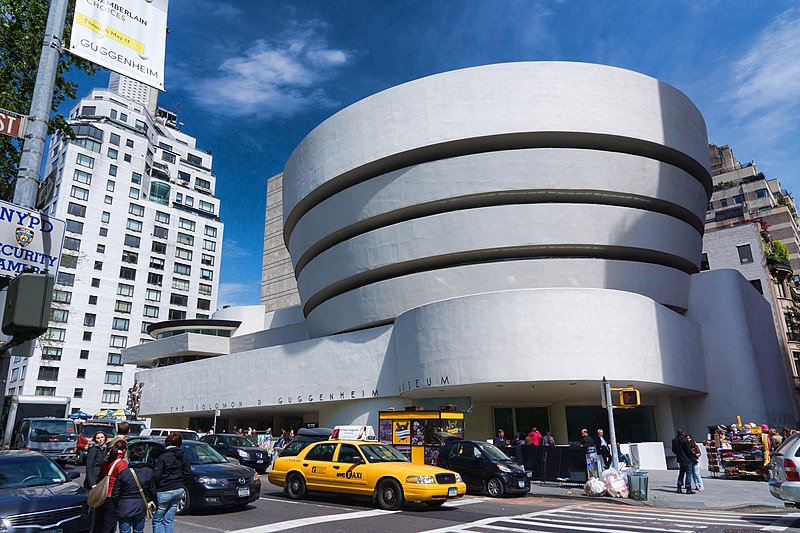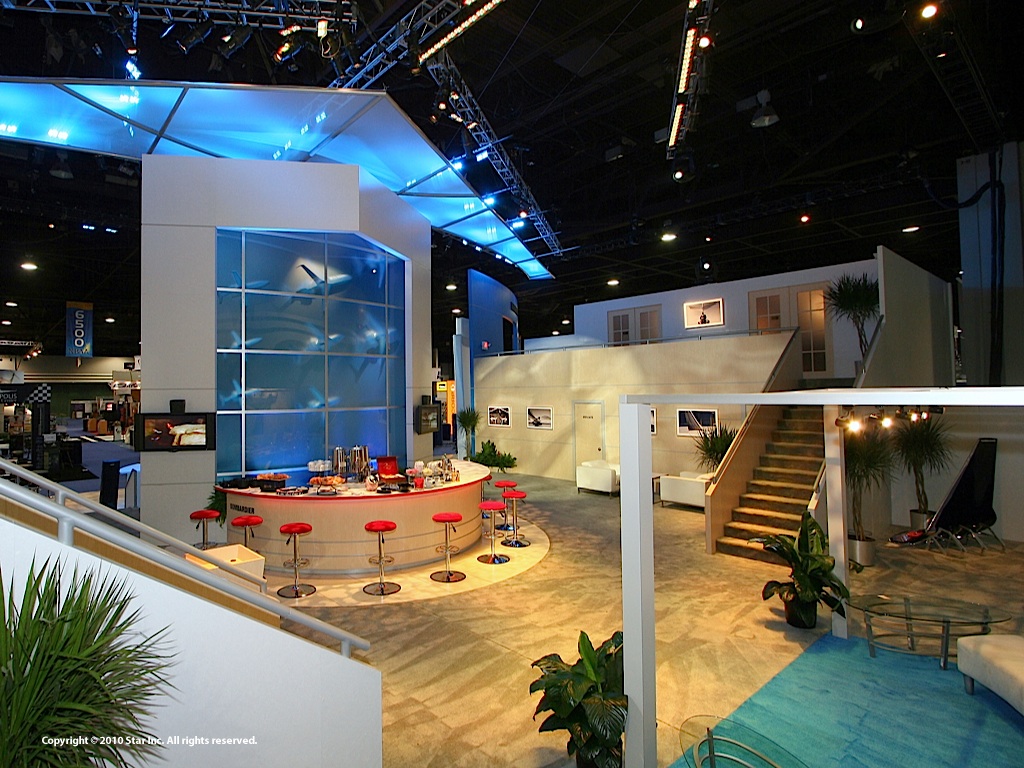“Form (ever) follows function” is a principle that was coined by the American architect Louis Sullivan. The phrase has been associated with modern architecture and industrial design in the 20th century. The idea of the principle is that the shape or structure of an object is primarily based upon the objects function or purpose. The way something looks should be determined by its function; its form should always have a purpose.
A good example that follows this principle is the Guggenheim Museum in New York City. The building was designed by architect Frank Lloyd Wright, also Sullivan’s assistant. It’s spiral structure was intended to allow visitors to easily view the artwork within the museum. The spiral staircase creates a good flow of traffic.

A form follows function example that can relate to exhibit design is a hanging box banner. The image to the right is a hanging banner from Box Works 2015. It in the shape of a cube so that the sign can be seen and read from multiple angles. If it were 2-dimensional then the banner would only be read from 2 angles.
Sometimes there’s instances where the principle is not followed. An object’s form can be purely just for aesthetics and looks; it’s form can be more important than its function. If there’s no significant function, then design can rely mainly on form. Below is an exhibit designed for Bombardier. The angular overhang is in the shape of a kite or can represent the wings of an airplane. It’s form is more significant to its function because no matter its shape, it will still have the same function.
Whether it be the sweeping eagle in his flight, or the open apple-blossom, the toiling work-horse, the blithe swan, the branching oak, the winding stream at its base, the drifting clouds, over all the coursing sun, form ever follows function, and this is the law. Where function does not change, form does not change. The granite rocks, the ever-brooding hills, remain for ages; the lightning lives, comes into shape, and dies, in a twinkling.
It is the pervading law of all things organic and inorganic, of all things physical and metaphysical, of all things human and all things superhuman, of all true manifestations of the head, of the heart, of the soul, that the life is recognizable in its expression, that form ever follows function. This is the law.Louis Sullivan



